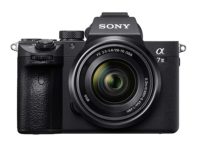
Nikon announced a new 180mm-400mm f/4 lens with a built-in 1.4x teleconverter similar to Canon’s 200-400mm f/4L IS at the 2018 CES show in Las Vegas. Personally I find the announcement at the Consumer Electronics Show to be an interesting venue as a $12,400 lens is certainly not a typical consumer product. It is puzzling why Nikon opted to announce it there. (end of rant)
This lens will surely replace the current 200-400mm f/4 VR lens that gets pretty mixed reviews. I had the opportunity to use the 200-400 several years ago and while it was a fun lens to play with for a day, I didn’t feel like it was worth the $6,000 price tag at the time. The highlight of using it was to tell all my friends that I got to use it. With the 200-500mm f/5.6 VR lens getting such positive reviews, and the very consumer friendly $1399 price tag, I’m sure that Nikon will sell a heck of a lot more of the 200-500 than the new 180-400mm f/4 lens. This is clearly a lens targeted at working pros and the extra stop of light at 400mm is welcome when shooting wildlife at the edge of day (sunrise/sunset when animals are active).
Press release:
NIKON ANNOUNCES NEW AF-S NIKKOR 180-400mm F/4E TC1.4 FL ED VR SUPER TELEPHOTO ZOOM LENS AT CES 2018
LAS VEGAS — CES BOOTH #14018 (January 8, 2018) – Today at the Consumer Electronics Show (CES), Nikon Inc. announced the new AF-S NIKKOR 180-400mm f/4E TC1.4 FL ED VR super-telephoto zoom lens, which is ideally suited for photographing sports and wildlife with astounding speed and clarity. This professional level FX-format lens is more versatile than ever, and has been updated with the newest NIKKOR lens technologies including Nikon’s first ever built-in teleconverter and an advanced optical formula to enhance performance and minimize weight.
“This lens is a great example of how Nikon continues to push the boundaries of innovation and what’s possible with pro-level optics and high-end imaging equipment,” said Kosuke Kawaura, Director of Marketing and Planning, Nikon Inc.
Popular Pro-Level Lens Gets Even More Versatile
This new NIKKOR lens is a professional super-telephoto zoom lens, which is even more versatile with an extended wide range of 180-400mm, and a constant f/4 aperture to easily isolate a subject from the sidelines, even in challenging light. This is also the first NIKKOR lens to include a built-in 1.4X teleconverter, allowing photographers to seamlessly swap to a 252-560mm1 (FX-format) focal range. The teleconverter is engaged at the flick of a switch, and is easily operated with a single finger while looking through the viewfinder. When used on the Nikon D500 and other DX-format DSLRs, the focal length is the equivalent of 270-600mm (378-840mm with teleconverter engaged).
Whether capturing fast-moving winter sports on the slopes or elusive wildlife at a distance, photographers can shoot with confidence from this high performance NIKKOR lens. The new 180-400mm f/4 is optimized for high-speed capture, and features an electromagnetic diaphragm, helping to create smooth and consistent exposures while shooting high-speed bursts of images. What’s more, the AF tracking algorithm controlling the motor drive has been enhanced to increase tracking performance of fast moving subjects. When using cameras equipped with Nikon’s advanced 153-point AF system (D5, D500, D850), the outer row of AF points are activated as cross-type sensors to significantly enhance the AF coverage throughout the frame.2
Enhanced Performance with the Addition of New Technology
The lens now uses a fluorite element, which contributes to improved balance while minimizing weight. To further enhance handling and agility, the lens has adopted a new ball-bearing tripod collar ring to create a seamless transition from shooting horizontal to vertical composition. The VR mechanism offers a normal and sports mode, with up to four stops3 of compensation to help create sharp images, even when handheld.
The lens construction includes the use of durable magnesium alloy for weight reduction, while the lens is also sealed against dust and moisture. A fluorine coating is also used to help repel water droplets and dirt.
The optical formula of the lens uses eight Extra Low Dispersion (ED) elements, doubling the amount of ED elements used by its predecessor, the NIKKOR 200-400mm. These help to provide extremely sharp and detailed images and 4K UHD / 1080p video, and is ideally mated to high resolution Nikon DSLR cameras. Nikon’s exclusive Nano Crystal Coat is used to effectively suppress instances of ghosting and flare.
Price and Availability
The AF-S NIKKOR 180-400mm f/4E TC1.4 FL ED VR lens will be available in March 2018 for a suggested retail price of $12,399.954. For more information on this NIKKOR lens and other Nikon products, please visit www.nikonusa.com.
- When the built-in or an external teleconverter is used, the focal length may not be displayed correctly in shooting information / Image data.
-
This feature will be available with a firmware upgrade for the D5, D850 and D500 as of March 2018
- Based on CIPA Standard. This value is achieved when FX-format compatible lenses are attached to a FX-format digital SLR camera and zoom lenses are set at the maximum telephoto position.









